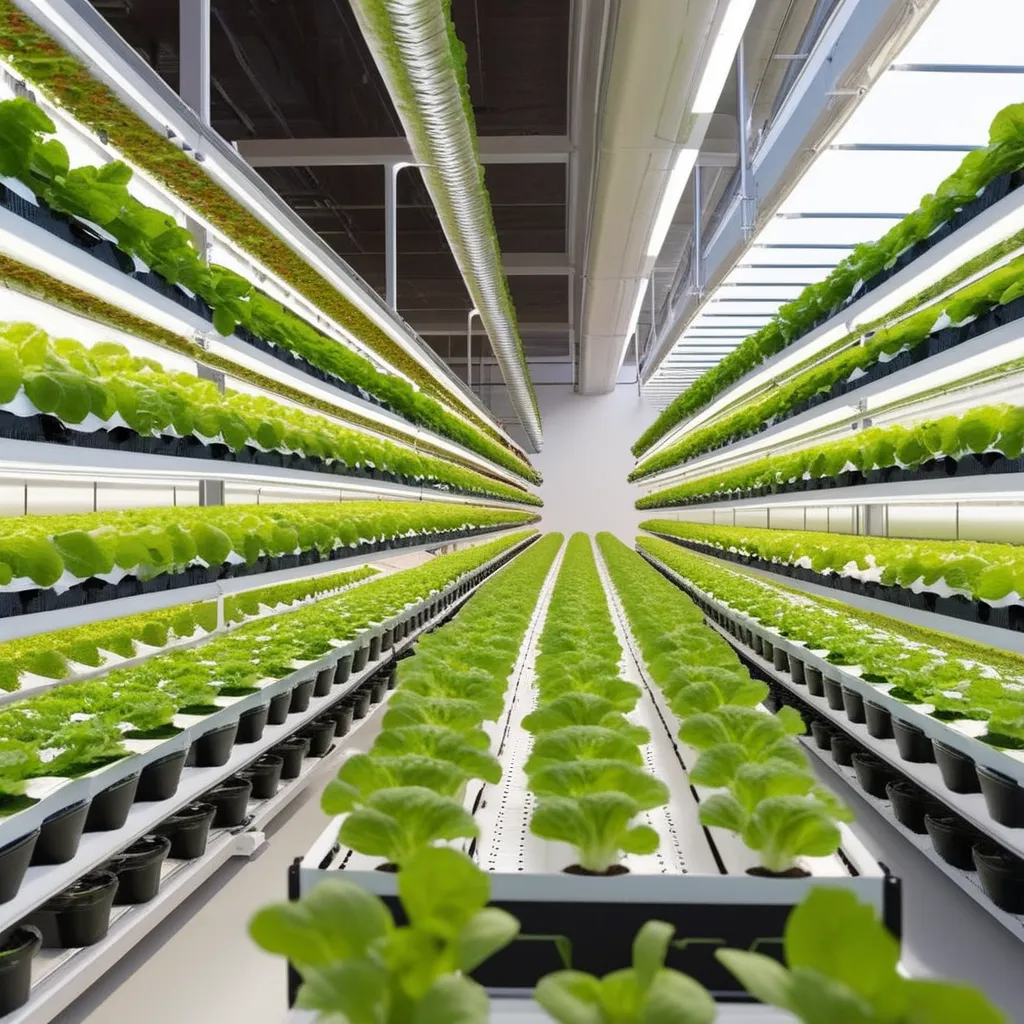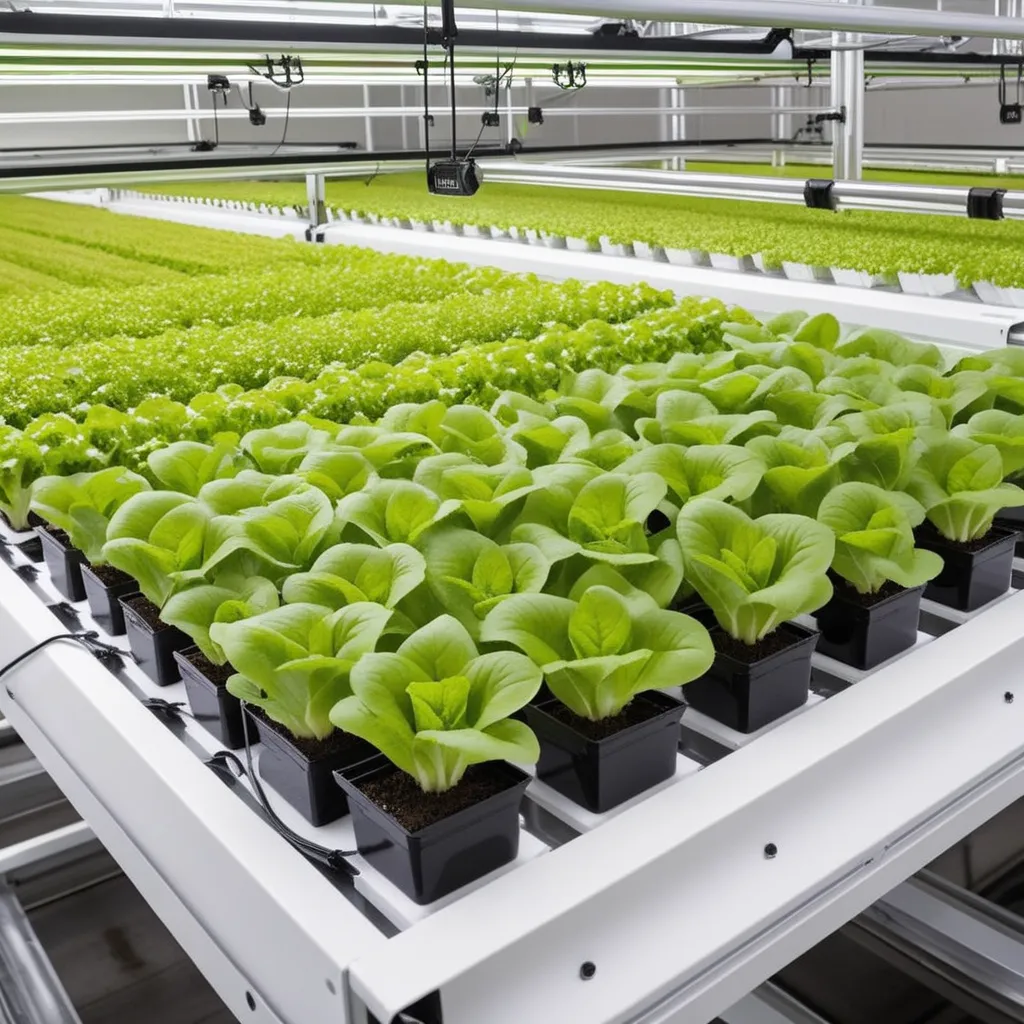The Future of Food Production: Vertical Farming
In recent years, a new way of growing our food has been sprouting up – quite literally. Vertical farming, once a niche concept, is now at the forefront of the future of food production. As someone who's always been fascinated by sustainable agriculture and innovation, I can't help but be excited about the potential of vertical farming to revolutionize the way we grow and consume our food.

What is Vertical Farming?
Vertical farming is a method of cultivating crops in stacked layers or vertically inclined surfaces. Unlike traditional agriculture, which relies on vast expanses of land, vertical farms take advantage of unused urban spaces and indoor environments. It's a bit like bringing the countryside into the city.
Personal Insight: I live in a bustling city where green spaces are limited. Vertical farming strikes me as a brilliant solution to the challenge of urban agriculture.
The Advantages of Going Vertical
1. Space Efficiency
Vertical farms can thrive in the heart of cities, utilizing abandoned warehouses, old factories, or even underground tunnels. This efficient use of space allows us to grow more food without the need for vast rural areas.
2. Year-Round Production
Traditional farming is often constrained by seasonal changes and adverse weather conditions. Vertical farming, on the other hand, provides a controlled environment where crops can grow year-round, unaffected by the elements.
3. Water Conservation
Water scarcity is a global concern, and traditional farming consumes vast amounts of this precious resource. Vertical farms employ hydroponic or aeroponic systems, using significantly less water than conventional agriculture.
4. Reduced Pesticide Use
In a controlled environment, pests and diseases can be managed more effectively, reducing the need for pesticides. This results in cleaner, healthier produce.
How Does Vertical Farming Work?
1. Stacked Layers
Vertical farms consist of multiple stacked layers or shelves, often resembling tall racks. Each layer is equipped with its own lighting, temperature, and humidity controls, creating microclimates that suit different crops.
2. Hydroponics or Aeroponics
Instead of soil, crops are grown using hydroponic or aeroponic systems. Hydroponics involve growing plants in nutrient-rich water, while aeroponics suspend plants in the air and mist them with nutrient solutions. Both methods provide plants with the nutrients they need to thrive.
3. LED Lighting
To mimic natural sunlight, vertical farms use energy-efficient LED lights that emit specific wavelengths optimized for plant growth. This artificial lighting can be adjusted to suit each crop's requirements.
The Future Potential
The adoption of vertical farming has already made strides, but its potential is far from fully realized. Here are some exciting possibilities:
1. Local Food Production
Vertical farms can be established in urban areas, bringing food production closer to consumers. This reduces the need for long-distance transportation, lowering carbon emissions and supporting local economies.
2. Crop Diversity
In a controlled environment, exotic or non-native crops can be grown, expanding the variety of fresh produce available year-round.
3. Sustainable Urban Design
Urban planners are beginning to incorporate vertical farming into building designs. Imagine a skyscraper that not only houses offices and apartments but also grows fresh produce on its balconies and rooftops.
4. Educational Opportunities
Vertical farms offer unique learning opportunities. Schools and communities can use them as educational resources to teach children about sustainable agriculture and healthy eating.
Challenges and Considerations
As with any innovation, there are challenges to address. The initial setup costs for vertical farms can be high, and the energy required for lighting and climate control must be managed efficiently to keep operational expenses reasonable. Additionally, the need for specialized knowledge and training in vertical farming techniques is essential for success.

Embracing the Vertical Farming Revolution
In a world where the population continues to grow, and resources become scarcer, innovative solutions like vertical farming are essential. As someone who values sustainability and the future of our planet, I'm optimistic about the potential of vertical farming to address some of our most pressing food production challenges.
So, the next time you enjoy a salad made from locally grown, pesticide-free greens in the middle of winter, you might just have vertical farming to thank. It's an exciting glimpse into the future of food production, one where sustainability and efficiency take center stage.<

No comments:
Post a Comment